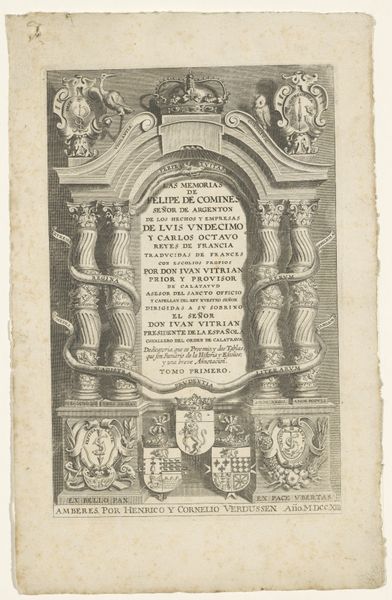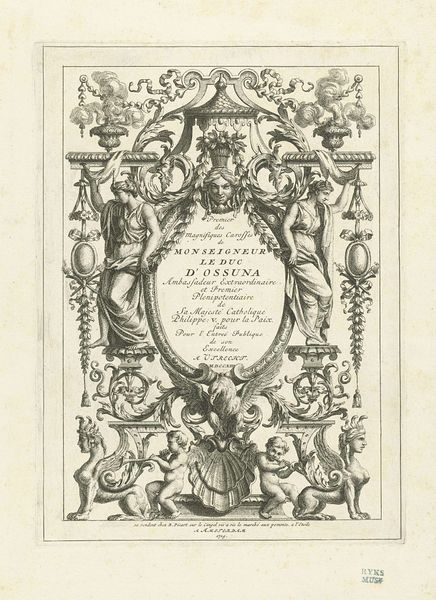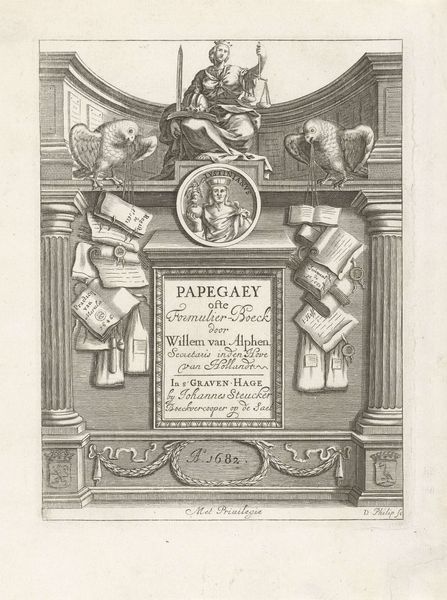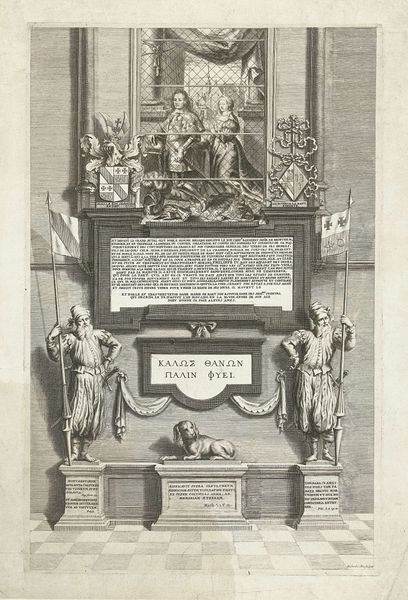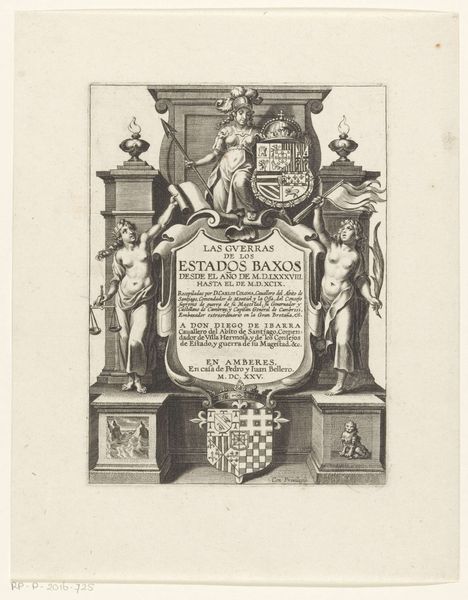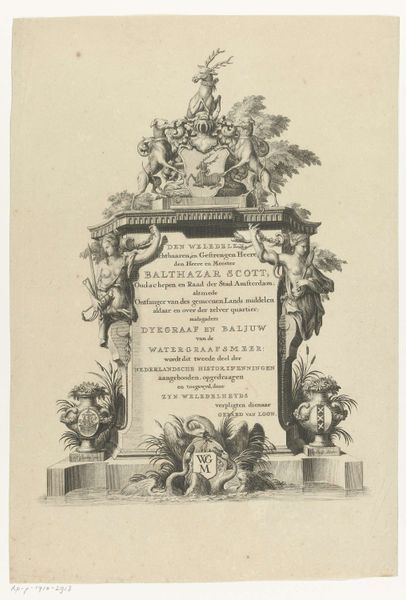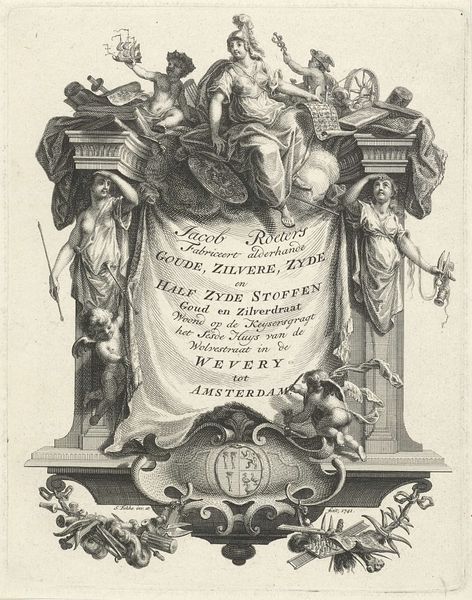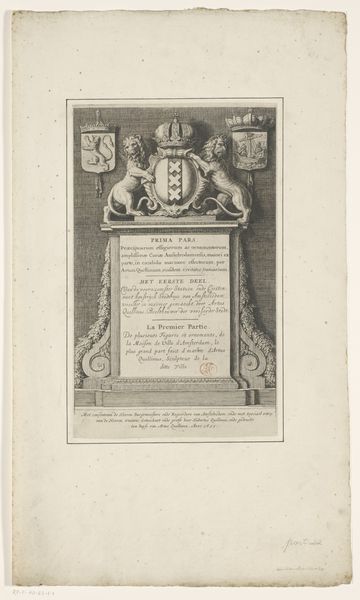
Titelpagina voor: Cornelius Curtius, Virorum illustrium ex ordine Eremitarum D. Augustini elogia , Antwerpen: 1636 1636
0:00
0:00
cornelisgallei
Rijksmuseum
print, typography, engraving
#
allegory
#
baroque
# print
#
old engraving style
#
typography
#
history-painting
#
engraving
Dimensions: height 188 mm, width 154 mm
Copyright: Rijks Museum: Open Domain
Curator: We are looking at the title page for "Virorum Illustrium ex Ordine Eremitarum D. Augustini Elogia", a 1636 engraving by Cornelis Galle I. It’s part of the Rijksmuseum collection. What strikes you first? Editor: It's stark. The dense network of fine lines feels so deliberate. There is so much laborious work evident in producing the sharp lettering, which serves as a heavy pedestal and backdrop. Curator: Indeed. Galle uses the rigid, architectural structure as a framework for classical motifs. Notice the allegorical figures flanking the inscription tablet. One writes, and the other—dressed in armor—holds a mallet and chisel. These forms offer a rich textural contrast between stone and soft flesh, intellect and action. Editor: And those cherubs up top, framing what looks like a Janus head – are they also part of the symbolic structure, supporting its weight while also reading and looking at time or at history in both directions? What paper and ink would Galle I have employed to communicate all of that so precisely? Curator: A fascinating observation. The duality suggested by the Janus head finds echoes in the mirrored poses and attributes of the allegorical figures. And absolutely, consider the materiality of the print itself. The engraving process, the quality of the paper and ink...these are not just practical concerns but intrinsic to the artwork's meaning. The precision of line conveys the esteem of the people, perhaps making reference to antiquity. Editor: Right, I am always pulled into that connection. The layers of labour involved – from Galle I and his tools all the way to who pulled the press? – it creates something way beyond simple reproduction of the title and also something beyond representing elites of that era. Curator: Thinking of all those hands involved… that's the kind of perspective that allows us to have a richer, fuller understanding of what Galle was trying to achieve in 1636. Editor: Yes. So, this title page not only tells us about the book to come, but also reveals some subtle clues about Antwerp's cultural, economic, and material circumstances back then. Thank you. Curator: Agreed. It highlights the intersection of artistic intention and cultural context and challenges us to reflect on it today.
Comments
No comments
Be the first to comment and join the conversation on the ultimate creative platform.
